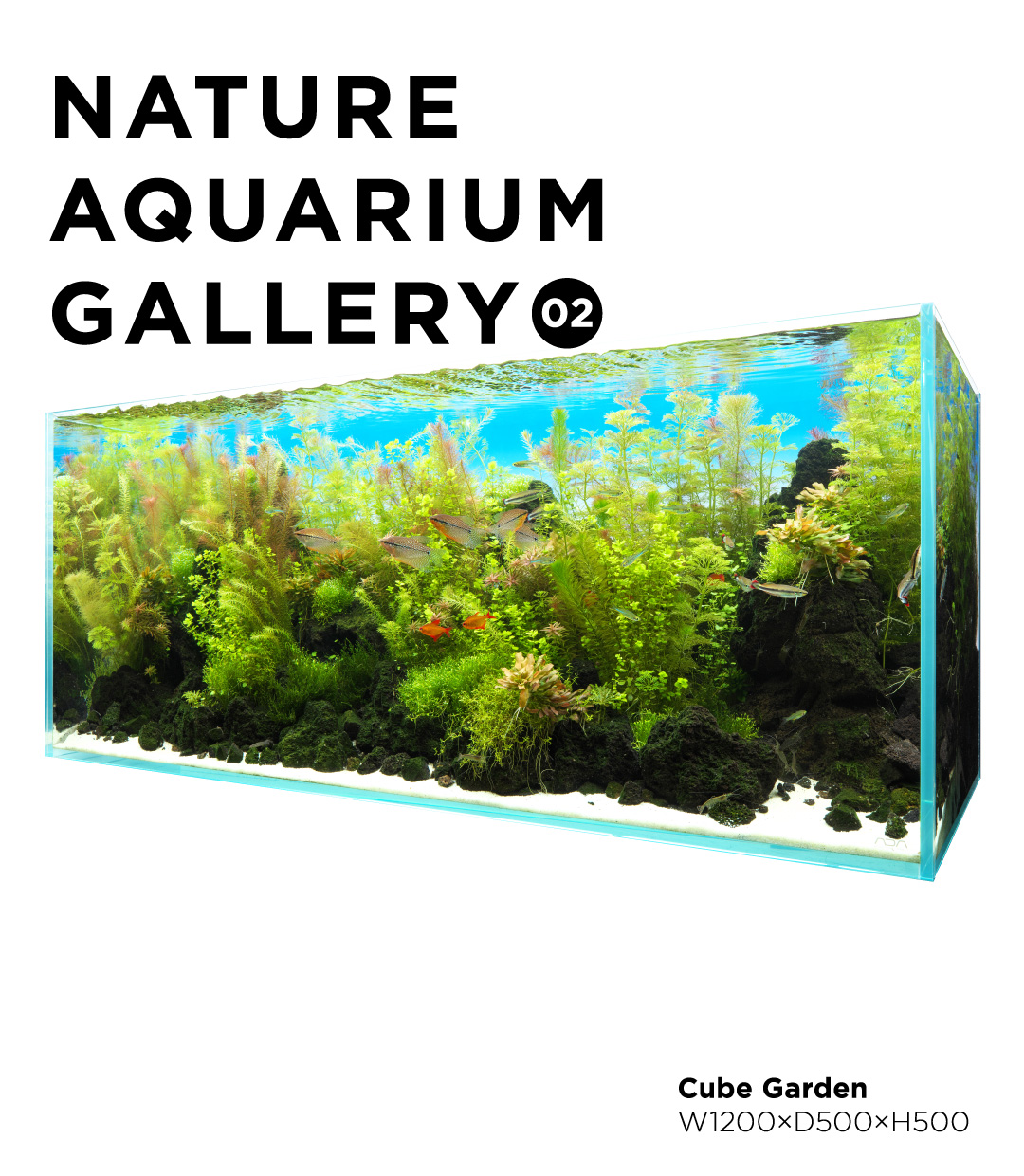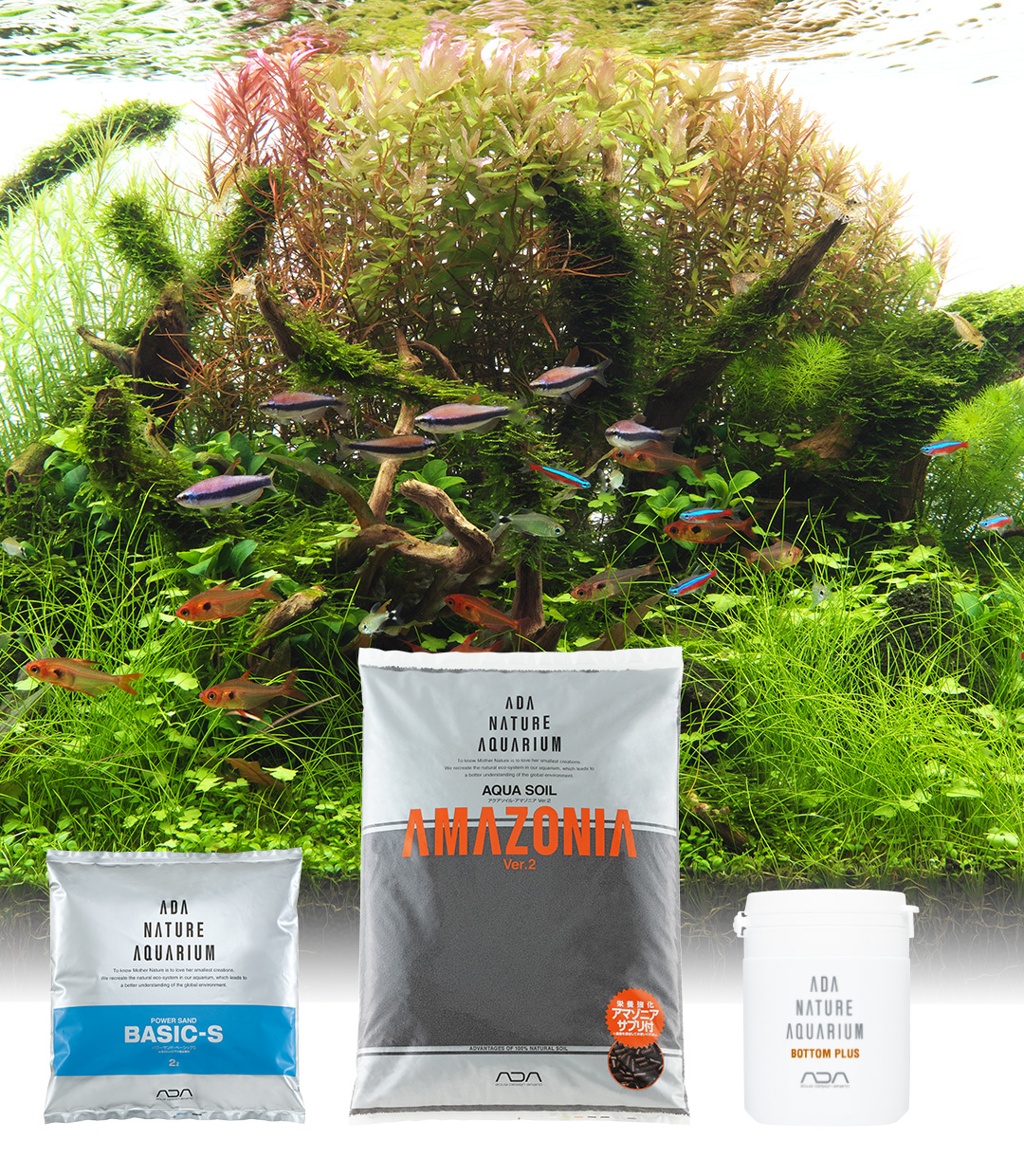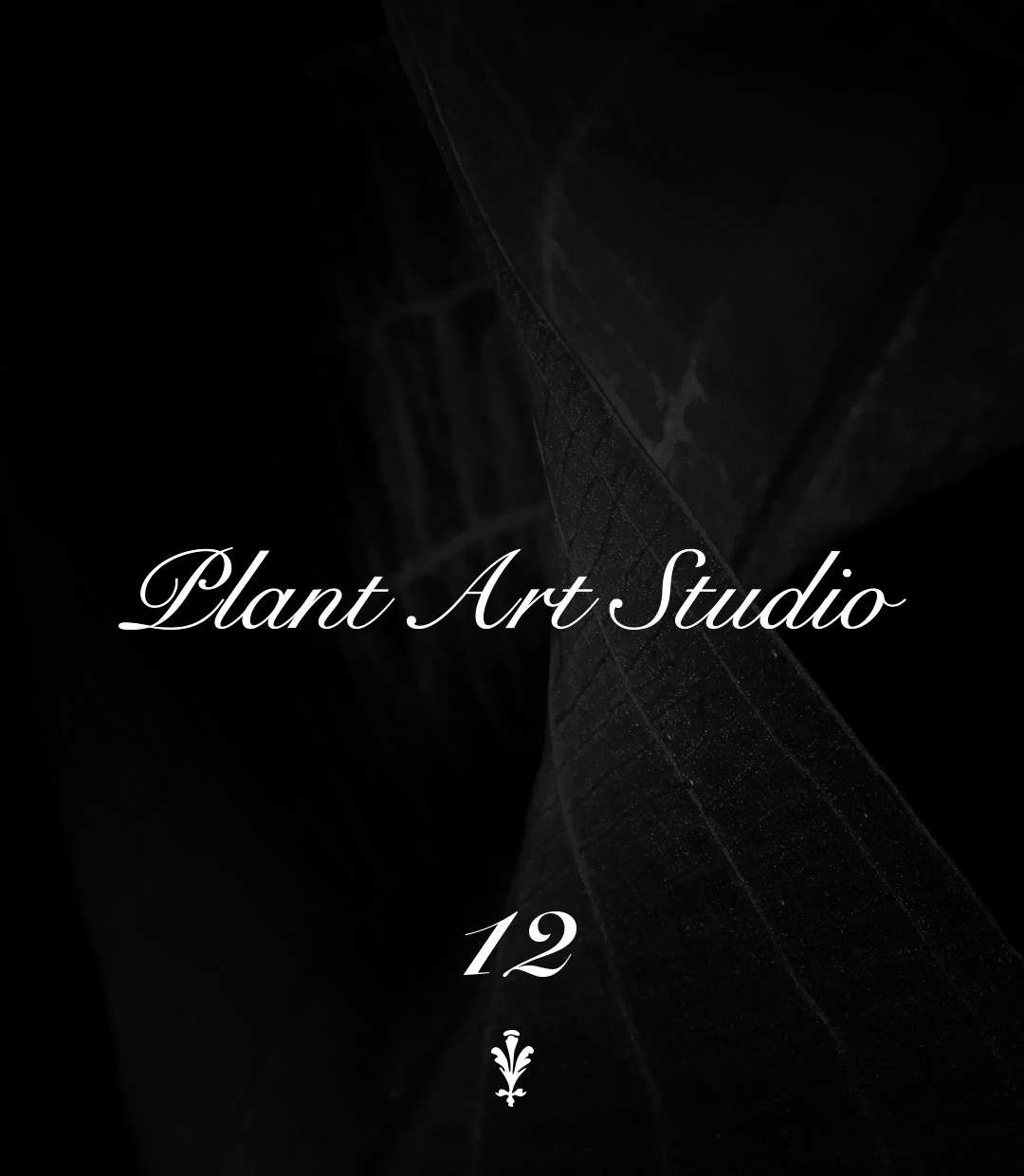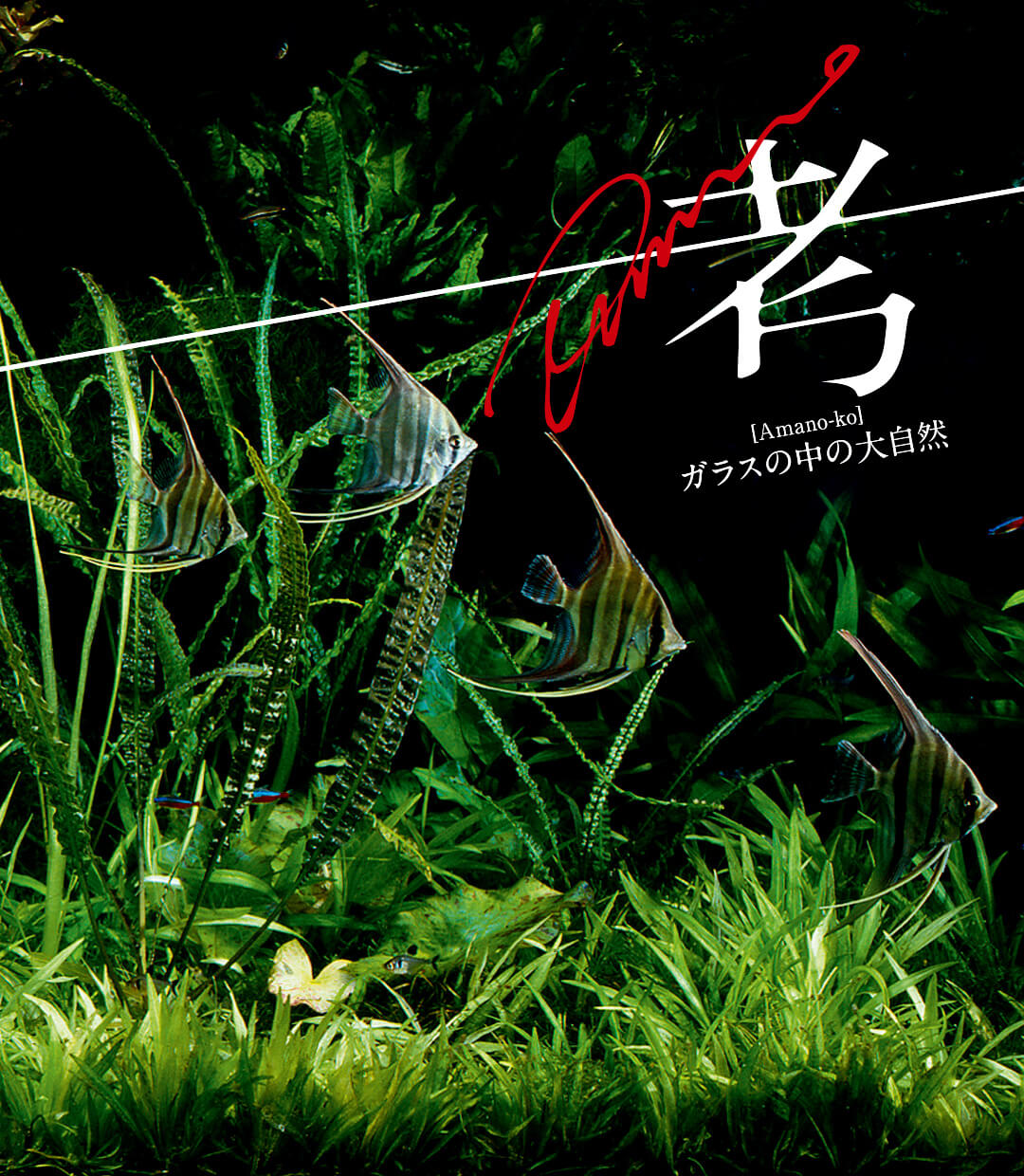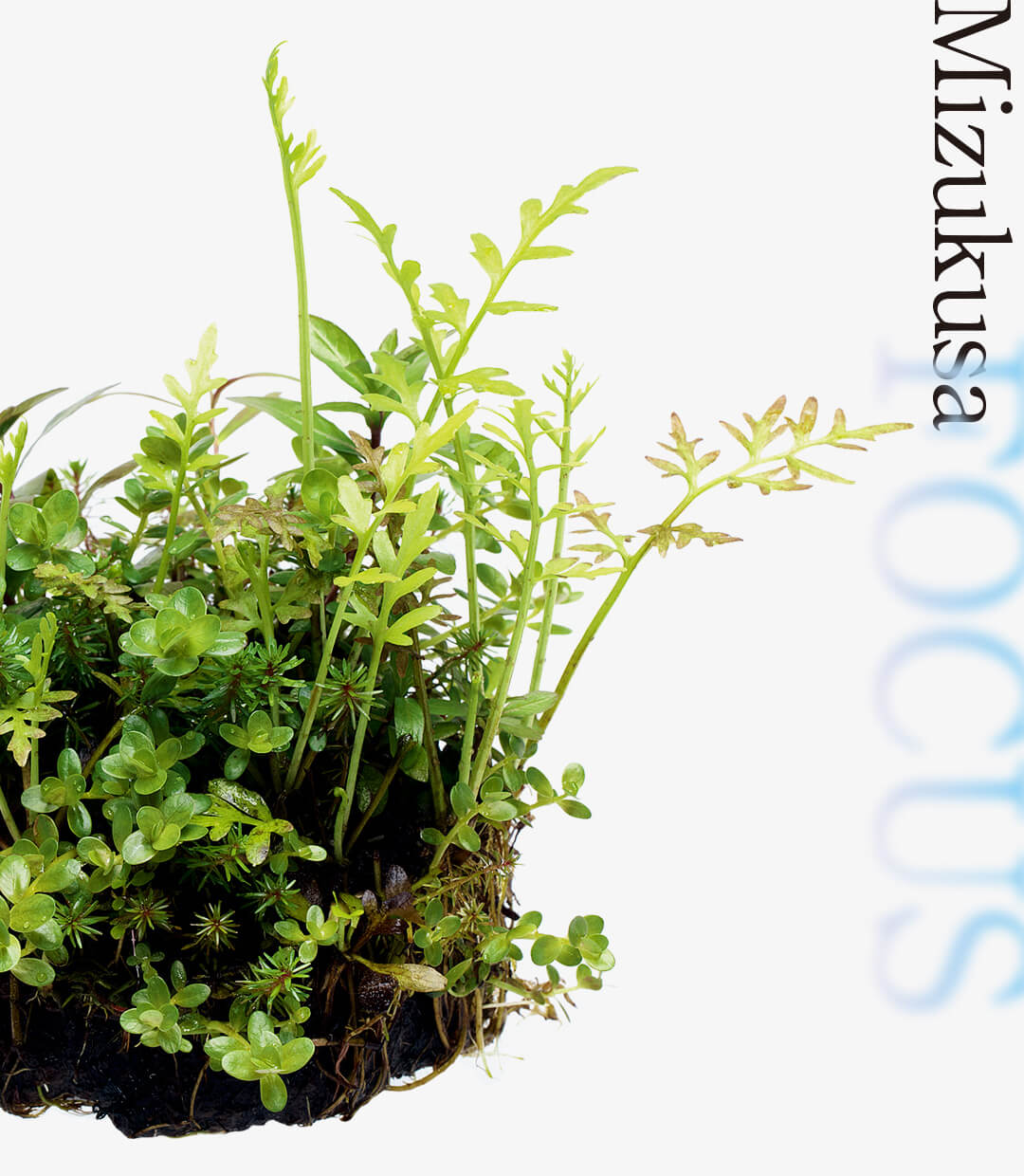2024.04.26
[ STYLE OF EPIPHYTIC PLANTS ] Effective use of epiphytic aquatic plants in layout scenes
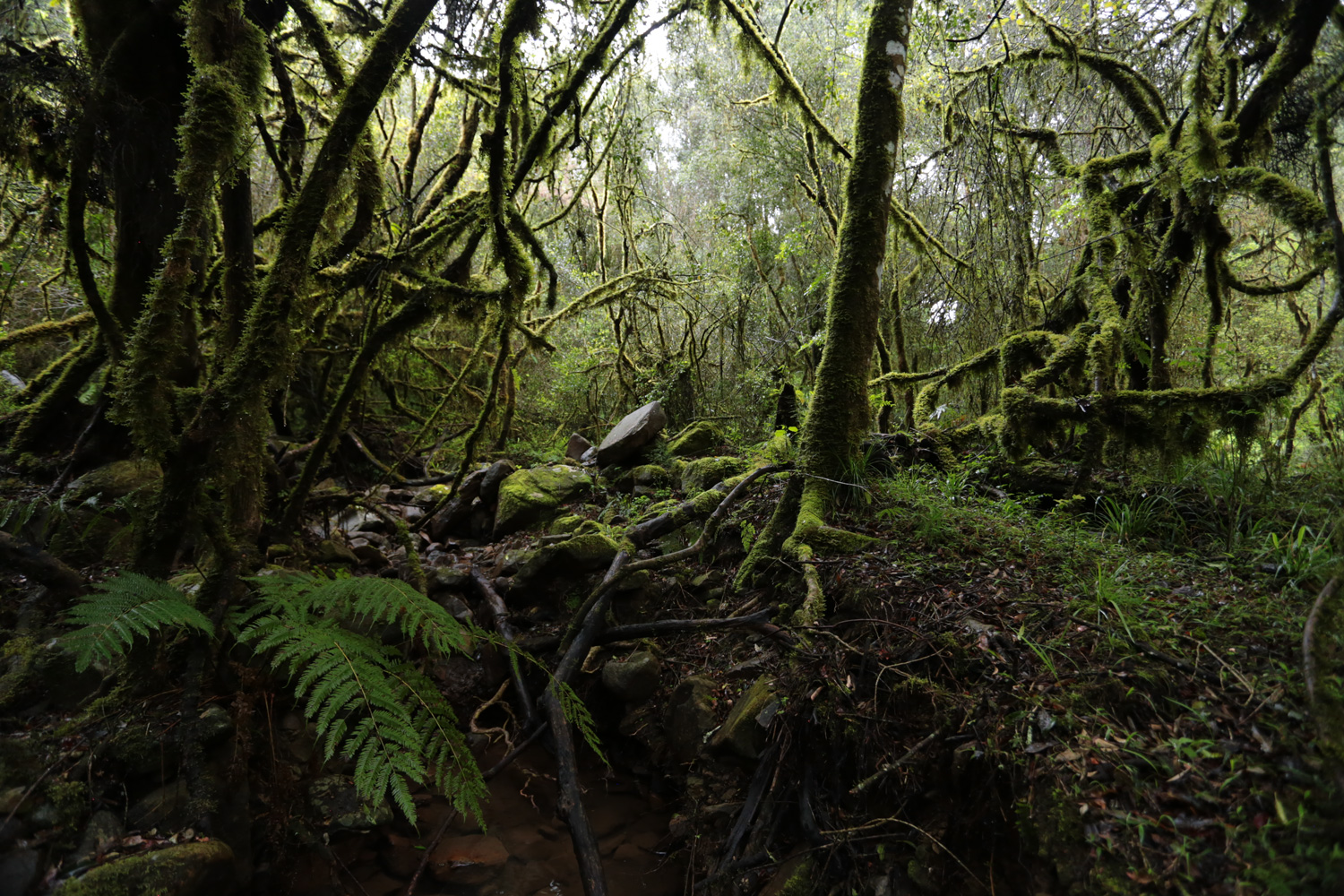
Epiphytes and the Nature Aquarium
The jungle is home to a diversity of ecosystems. Some contain plants which, in areas racked by squall and fog, take root on fallen trees, trunks, branches or rock walls. Called epiphytes, they are often seen among ferns, Araceae and bryophytes. Most of them grow slowly, so the natural landscapes of the areas they live in can be assumed to have formed over very long periods. They evoke the majestic and thick energy and drama of such areas, the natural feeling that the Nature Aquarium seeks to express in its layout. For the expression of such natural feeling, epiphytic aquatic plants such as Volbitis and Anubias are indispensable. Growing epiphytic aquatic plants may be a long process, but it is a process which possesses the allure favored by the connoisseur as it leads to future enjoyment and excitement. You too can feel this gentle natural pace by growing epiphytic aquatic plants.
The jungle is home to a diversity of ecosystems. Some contain plants which, in areas racked by squall and fog, take root on fallen trees, trunks, branches or rock walls. Called epiphytes, they are often seen among ferns, Araceae and bryophytes. Most of them grow slowly, so the natural landscapes of the areas they live in can be assumed to have formed over very long periods. They evoke the majestic and thick energy and drama of such areas, the natural feeling that the Nature Aquarium seeks to express in its layout. For the expression of such natural feeling, epiphytic aquatic plants such as Volbitis and Anubias are indispensable. Growing epiphytic aquatic plants may be a long process, but it is a process which possesses the allure favored by the connoisseur as it leads to future enjoyment and excitement. You too can feel this gentle natural pace by growing epiphytic aquatic plants.
Effective use of epiphytic aquatic plants in layout scenes
Slow growing epiphytic aquatic plants often take a long time to reach maturity but the depth of natural expression they gain from that time can enhance the completeness of a layout. Here we introduce layouts using epiphytic aquatic plants and tips on how to manage them.
Deep yet transparent ferns BOLBITIS STYLE
Bolbitis heudelotii is an epiphytic aquatic fern characterized by its transparent, deep green color. This coloring is suitable for giving a layout an air of mystery or for when you want to naturally preserve the shadows of assembled driftwood.
Bolbitis heudelotii is an epiphytic aquatic fern characterized by its transparent, deep green color. This coloring is suitable for giving a layout an air of mystery or for when you want to naturally preserve the shadows of assembled driftwood.

Incorporating shadows naturally in this layout, epiphytic growth on the root base of Branch Wood is used to create a peculiar depth and three-dimensionality.
NOTE
Seeing as they like flowing water, whilst maintaining an appropriate balance of leaves and shadows, trim leaves and thin out plants to prevent dense growth. Additionally, as Bolbitis heudelotii are susceptible to damage from Caridina multidentata, be cautious about how many you put.
Seeing as they like flowing water, whilst maintaining an appropriate balance of leaves and shadows, trim leaves and thin out plants to prevent dense growth. Additionally, as Bolbitis heudelotii are susceptible to damage from Caridina multidentata, be cautious about how many you put.
Reaching to a bright background MICROSORUM STYLE
The vivid greens of the Microsorum (currently classified under the genus Leptochilus) family make them effective midground plants when there are vibrant stemmed plants in the background. Aim to plant them strategically to cover areas of composition you wish to conceal, such as structural materials or shadows cast by driftwood, while also aiming for gradation or complementary color effects.
The vivid greens of the Microsorum (currently classified under the genus Leptochilus) family make them effective midground plants when there are vibrant stemmed plants in the background. Aim to plant them strategically to cover areas of composition you wish to conceal, such as structural materials or shadows cast by driftwood, while also aiming for gradation or complementary color effects.

W1,800×D600×H600(mm)
In this convex composition, Microsorum Narrow Leaf’s leaves spread radially and appear to synchronize with the movement of the branches, creating a pleasing and comfortable viewing experience.
In this convex composition, Microsorum Narrow Leaf’s leaves spread radially and appear to synchronize with the movement of the branches, creating a pleasing and comfortable viewing experience.
NOTE
Cutting leaves that are misaligned or excessively curved, aim to achieve a neat appearance for the plant. Be cautious with leaves that have translucent tips, as these are likely new leaves.
Cutting leaves that are misaligned or excessively curved, aim to achieve a neat appearance for the plant. Be cautious with leaves that have translucent tips, as these are likely new leaves.
A submerged spectacle of old branches birthing new leaves HYGROPHILA PINNATIFIDA & ANUBIAS STYLE
Being shade tolerant, Anubias is suitable for growing in darker areas, such as the driftwood-shaded midground area, and congruously connects midground and background areas. On the other hand, the light-loving Hygrophila pinnatifida is best planted above the Anubias. They are both epipytic aquatic plants but, used in combination, the contrast of their different leaf shapes alleviates monotony.
Being shade tolerant, Anubias is suitable for growing in darker areas, such as the driftwood-shaded midground area, and congruously connects midground and background areas. On the other hand, the light-loving Hygrophila pinnatifida is best planted above the Anubias. They are both epipytic aquatic plants but, used in combination, the contrast of their different leaf shapes alleviates monotony.

Growing amonst Taxiphyllum barbieri, over time the unique feather-like leaves stand out and give a rich rustic feel.
NOTE
Plenty of light is needed to add redness to Hygrophila pinnatifida leaves. ECA PLUS is an effective plant supplement for improving green and red coloration.
Plenty of light is needed to add redness to Hygrophila pinnatifida leaves. ECA PLUS is an effective plant supplement for improving green and red coloration.
Accenting the midground with unique leaf shapes BUCEPHALANDRA STYLE
Bucephalandra is similar to Anubias, which belongs to the same Araceae family, but its leaf stalks and leaf surfaces have a unique luster which give it a distinctive charm. In its natural habitat it forms colonies on submerged river banks and rocky areas. This natural scenery can be reproduced in a layout by planting multiple plants together on driftwood or in the crevices and edges of stones.
Bucephalandra is similar to Anubias, which belongs to the same Araceae family, but its leaf stalks and leaf surfaces have a unique luster which give it a distinctive charm. In its natural habitat it forms colonies on submerged river banks and rocky areas. This natural scenery can be reproduced in a layout by planting multiple plants together on driftwood or in the crevices and edges of stones.

NOTE
They grow extremely slowly, and algae often grows readily on them. To maintain their beauty, we recommend introducing organisms with high algae removal capabilities.
They grow extremely slowly, and algae often grows readily on them. To maintain their beauty, we recommend introducing organisms with high algae removal capabilities.

Effective against common green algae such as diatoms and spirogyra.
Crossocheilus oblongus
Specializes in removal of stubborn, tough filamentous algae types.
Best supporting role for staging naturalness MOSS STYLE
For alleviating the unnatural feel of cut driftwood ends, or producing an ancient atmosphere, moss is indispensable. The key is to spread or wrap it thinly over layout materials.
For alleviating the unnatural feel of cut driftwood ends, or producing an ancient atmosphere, moss is indispensable. The key is to spread or wrap it thinly over layout materials.

NOTE
A tip for successfully growing it epiphytically: use specialized threads tailored to the type of moss you want to grow.
A tip for successfully growing it epiphytically: use specialized threads tailored to the type of moss you want to grow.
Moss Cotton
A dark green thread similar to the moss color will not stand out, even when wrapped over the moss. Made of cotton, such threads will disintegrate naturally whilst the moss remains adhered.
Recommendations for Moss Cotton wrapping:
Taxiphyllum barbieri, Taxiphyllum sp. ‘Peacock Moss’ , Taxiphyllum sp. ‘Spiky Moss’, Vesicularia Montegni, Vesicularia dubyana
A dark green thread similar to the moss color will not stand out, even when wrapped over the moss. Made of cotton, such threads will disintegrate naturally whilst the moss remains adhered.
Recommendations for Moss Cotton wrapping:
Taxiphyllum barbieri, Taxiphyllum sp. ‘Peacock Moss’ , Taxiphyllum sp. ‘Spiky Moss’, Vesicularia Montegni, Vesicularia dubyana
Terra Line
Made from synthetic fibre, Terra Line will not disintegrate underwater. For firmly securing plant species whose epiphytic adherence takes longer.
Recommendations for Terra Line:
Taxiphyllum sp. ‘Flame Moss’, Riccardia chamedryfolia, Callicostella prabaktiana
Made from synthetic fibre, Terra Line will not disintegrate underwater. For firmly securing plant species whose epiphytic adherence takes longer.
Recommendations for Terra Line:
Taxiphyllum sp. ‘Flame Moss’, Riccardia chamedryfolia, Callicostella prabaktiana
